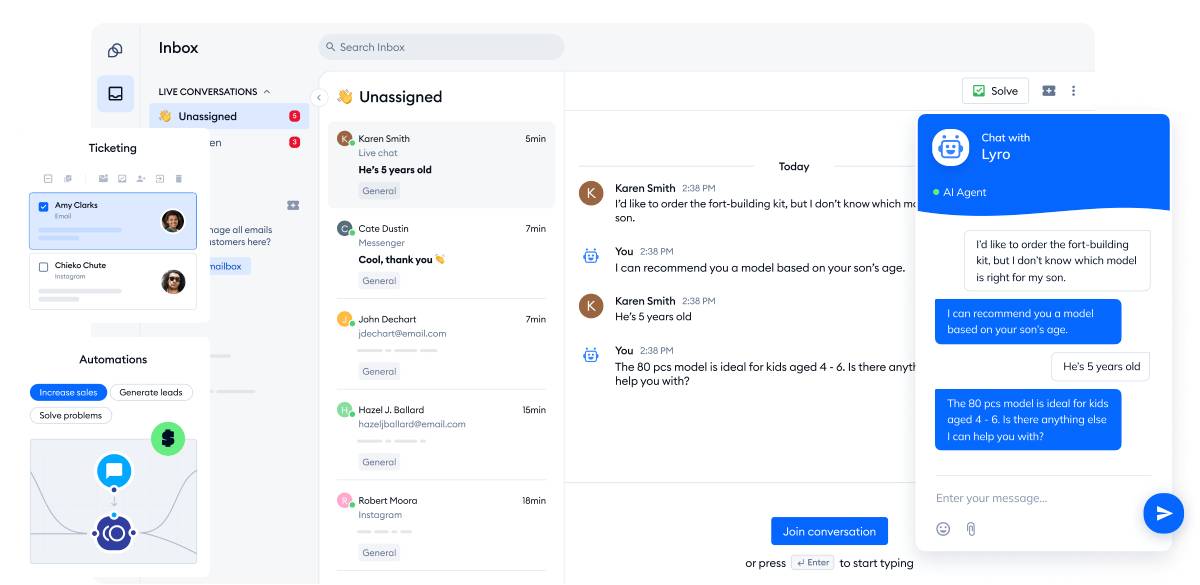
Chatbot Tools That Improve Dropshipping Support
As your dropshipping store grows, customer support can become a bottleneck. Endless inquiries about shipping times, return policies, and order statuses can drain resources and slow down operations. The solution? Implementing a chatbot for ecommerce—an intelligent assistant that provides instant answers, handles repetitive tasks, and elevates your dropshipping support strategy.
This guide explores how AI-powered chatbots are revolutionising customer automation in ecommerce, and compares the best tools for integrating bots into your dropshipping operation.
Why Use a Chatbot for Ecommerce?
Chatbots offer far more than just auto-replies. When integrated correctly, they:
- Reduce response times from hours to seconds
- Cut down customer service costs
- Increase conversions by handling objections instantly
- Improve the customer automation experience across time zones
- Offer 24/7 support without needing 24/7 staff
For dropshippers, where shipping delays and tracking updates are common concerns, bots offer timely reassurance that prevents chargebacks and negative reviews.
Core Features to Look For in a Dropshipping Chatbot
| Feature | Why It Matters |
| Order Tracking Integration | Reduces “Where is my order?” inquiries |
| Multilingual Support | Handles global customers effectively |
| Prebuilt FAQ Flows | Answers common dropshipping-specific questions |
| Ecommerce Platform Integration | Shopify, WooCommerce, Wix, etc. |
| Live Agent Handoff | Seamless transition to human support when needed |
| Analytics and Feedback Loop | Monitor performance and train bot responses |
Best Chatbot Tools for Dropshipping Stores

1. Tidio
A top choice among dropshippers, Tidio combines live chat, automation, and AI-powered responses in a single interface.
Key Features:
- Shopify and WooCommerce integrations
- Order tracking widget (for AliExpress, DSers, etc.)
- Drag-and-drop chatbot builder
- Prebuilt ecommerce automation templates
Pros:
- Clean UX, beginner-friendly
- Works seamlessly on mobile
- Multilingual bot support
Best For: Small to medium dropshipping stores that want quick setup and high automation potential.
2. Gorgias
While known for helpdesk functionality, Gorgias includes chatbot capabilities powered by automation rules.
Key Features:
- Smart macros and canned replies
- Shopify integration for order management inside chat
- Seamless live chat to ticket creation
- Pulls in order details, customer info automatically
Pros:
- Deep ecommerce focus
- Centralised multichannel support (email, chat, social)
- Excellent for managing larger teams
Best For: Scaling dropshipping brands with multiple support channels and a team of agents.
3. Chatfuel
Chatfuel is a no-code chatbot builder originally designed for Facebook Messenger but now supporting web integrations.
Key Features:
- Drag-and-drop flow editor
- Automated customer journey mapping
- Messenger, WhatsApp, and Instagram DMs
- Easy-to-launch product FAQs and order updates
Pros:
- Strong for social commerce automation
- No coding required
- Templates for ecommerce businesses
Best For: Stores selling via social media channels or using Meta ads.
4. ManyChat
A leader in Messenger and SMS automation, ManyChat now supports omnichannel chatbots and ecommerce integrations.
Key Features:
- Built-in checkout options for Facebook
- Integration with Shopify and Zapier
- Advanced customer segmentation
- Flow builder for product recommendation bots
Pros:
- Powerful for mobile-first dropshipping funnels
- Messenger, SMS, WhatsApp coverage
- High engagement rates
Best For: Dropshippers running paid social campaigns or influencer collaborations.
5. Zendesk Chat (Sunshine Conversations)
Zendesk’s chatbot integrates with its broader helpdesk ecosystem, offering enterprise-level automation and reporting.
Key Features:
- AI-driven bots with fallback to agents
- Unified inbox across email, social, and site
- Smart routing based on customer profile
- Extensive analytics and reporting
Pros:
- Built for high-volume stores
- Flexible integrations via API
- Enterprise scalability
Best For: Large-scale dropshipping operations with complex customer service needs.
6. Intercom
Intercom blends chatbot automation with user behaviour tracking, making it ideal for ecommerce CRO as well as support.
Key Features:
- Custom chat triggers based on visitor behaviour
- Pre-purchase and post-purchase automation flows
- AI chat with live support fallback
- Shopify app and REST API support
Pros:
- Powerful onboarding and cross-sell flows
- Customer profile-based messaging
- Integrates with marketing and support tools
Best For: Data-driven dropshippers wanting to blend support with conversion rate optimisation.
Chatbot Use Cases in Dropshipping
1. Order Tracking Automation
Let bots handle order tracking by pulling live data from DSers, AliExpress, or your fulfilment system.
Sample Flow: Customer: “Where is my order?” Bot: “Hi! Please enter your email or order number.” Bot: “Found your order! It was shipped via ePacket and is currently in transit. ETA: 7–10 days.”
2. 24/7 Shipping FAQ Coverage
Handle common concerns like:
- “When will my order arrive?”
- “What’s your return policy?”
- “Do you ship internationally?”
Tip: Keep answers short, link to detailed help articles when needed.
3. Upselling and Cross-Selling
Use chatbot flows to recommend complementary products or offer last-minute discounts during checkout.
Example: Bot: “Customers who bought this also loved our eco toothbrush set—add it now for 10% off?”
4. Cart Recovery
Trigger automated messages when users abandon their cart.
Example: Bot (after 15 mins): “Still thinking it over? Here’s 10% off your order if you complete checkout now.”
5. Language Localisation
Auto-detect visitor location and serve chatbot flows in their preferred language.
Platforms: Tidio, ManyChat, and Intercom offer multilingual support out of the box.
Integrate a Chatbot into Your Dropshipping Store
- Choose a chatbot tool that integrates with your ecommerce platform.
- Install the chatbot plugin or app (Shopify App Store, WordPress plugin, or JS embed).
- Create your key flows:
- Order tracking
- Shipping FAQs
- Returns and refunds
- Welcome discount offers
- Train your chatbot using real customer FAQs or tickets.
- Test across desktop and mobile before going live.
Best Practices for Customer Automation via Chatbots
| Practice | Why It Matters |
| Keep responses short and clear | Reduces customer frustration |
| Offer human handoff options | Ensures complex queries aren’t mishandled |
| Use real names or avatars | Humanises the bot experience |
| Personalise with order data | Makes automation feel thoughtful |
| Track metrics like resolution time and CSAT | Helps improve over time |
Chatbot ROI: What You Can Expect
Time Savings:
- 30–60% fewer tickets for common questions
Cost Reduction:
- Lower need for 24/7 agents or outsourced support
Revenue Boost:
- Chatbot-assisted upsells and cart recovery
Customer Retention:
- Faster responses improve satisfaction and trust
Key Takeaway
Chatbots aren’t just a “nice to have”—they’re an essential part of modern dropshipping support. Whether you’re managing high volumes or just starting to scale, a chatbot for ecommerce can save you time, automate key workflows, and deliver a better customer experience.
Automate Support Without Losing the Human Touch

When set up right, chatbots do more than just answer FAQs—they delight customers, close sales, and build loyalty. By choosing the right customer automation tools and integrating them with your dropshipping systems, you’ll create a support operation that works as hard as you do.
So start small, scale smart, and let your chatbot turn conversations into conversions.


